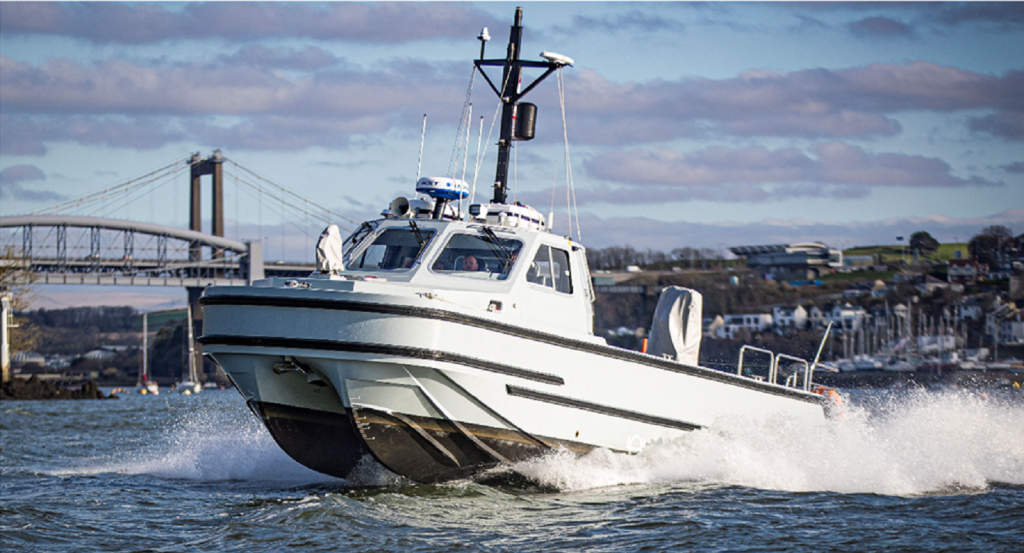
The Royal Australian Navy and Defence Science Technology Group representatives met with their Republic of Singapore Navy counterparts to discuss the development and evolution of autonomous maritime systems.
During Indo-Pacific Endeavour – Australia’s annual engagement activity with regional partners – the discussions in Singapore centred around both nations’ shared interest in robotics, autonomous systems and artificial intelligence (RAS-AI), and how both partner nations can collaborate on this technology.
Maritime Deployable Robotic Autonomous Systems and Experimentation Unit Commanding Officer, Lieutenant Commander Charlie Kenney, said Singapore’s sophisticated unmanned surface vehicle technology makes them an important naval partner for Australia.
“Within the next decade, robotic technologies will transform the maritime industry and we’ll see an increase in uncrewed vessels and RAS-AI technology on and under the water,” Lieutenant Commander Kenney said. “Singapore is one of the leading nations developing in this space, so it makes sense that we collaborate.”
Market analysis
According to GlobalData forecasts, the robotics sector was worth $63bn in 2022, and by 2030 it will have grown at a compound annual growth rate of 17% to $218bn.
Given current geopolitical tensions over Taiwan, Western and Nato forces are adopting an expeditionary posture more suited to high intensity warfare. The use of autonomous robotic systems will provide supplementary support to ships and submarines.
How well do you really know your competitors?
Access the most comprehensive Company Profiles on the market, powered by GlobalData. Save hours of research. Gain competitive edge.

Thank you!
Your download email will arrive shortly
Not ready to buy yet? Download a free sample
We are confident about the unique quality of our Company Profiles. However, we want you to make the most beneficial decision for your business, so we offer a free sample that you can download by submitting the below form
By GlobalDataNavies around the globe are increasingly investing in the development and integration of unmanned surface vehicles (USV) and unmanned underwater vehicles (UUV) to create ‘hybrid’ fleet structures in the interest of enhancing survivability, increasing efficiency, and reducing the long-term costs of naval operations
Lieutenant Commander Kenney said the two nations’ similarities mean that both are focused on improving their UUV capabilities and USVs.
“This partnership is about sharing challenges and opportunities between both navies so we can create efficiencies that will lead to workforce capability benefits, cost benefits and technology improvements.”






